Author Archives: Cliff
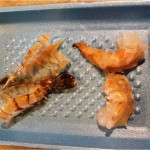
Feeding High Quality Froozen Foods
I thought I would take some time to explain how I prepare the raw foods that I feed to my carnivorous / predator fish and my anemones. This results in a higher quality food for less cost than purchased frozen fish foods.

Some Tips for Beginners
The below is some key learnings that I had stumbled upon in my never ending journey of learning and keeping marine aquariums. I thought I would take the time to share them.
Continue reading
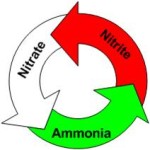
The Nitrogen Cycle
Overview
When we talk about having a cycled and established tank, we are really referring to having a tank with a developed and functioning nitrogen cycle within our aquarium. Before you cycle an aquarium for the first time, it would benefit you to better understand how the nitrogen cycle works.
Continue reading
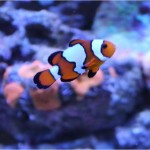
Good Starter Fish and Clean-up Crew Options
So, now after deciding to set-up your first marine aquarium and having your patients tested to the limit waiting for your tank to become cycled, you are now ready to add your first inhabitants.
Wither you decide to start off by adding your first fish or two, or start by adding your clean-up crew (CUC), can really depend a lot on your personal preferences and potentially any algae you would need to start controlling.
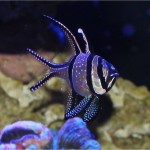
Picking out New Fish for a Marine Aquarium
You have to be careful picking out a new fish for your marine aquarium. The last thing you want to happen is to take your new home and it becomes sick due to a disease or something else that you could have identified at the store. There are a few things to watch for that will give you an indication there could potentially be a problem with a fish. These indicators to watch for are both in the appearance of the fish as well as how the fish behaves.
Selecting a healthy fish is not a hard thing to do but it does require patience and restraint. If you are not 100% sure that a fish is healthy , it would likely be best not to buy it. The below are the basic rules of thumb that I follow. Keep in mind, following a process like this can never be 100% safe or 100% accurate, so you should still quarantine new additions before add them to your display tank.
Continue reading

Tap Water or RO Water, What’s the Big Deal ???
As most people have already learned, the key to any type of successful marine aquarium is to obtain the best water parameters possible and to keep these parameters stable. When referring to marine aquariums, I am speaking of both reef and FOWLR (Fish Only With Live Rock) style aquariums. The reason being is that most of the marine fish that we keep are wild caught and come from (or near) a coral reef and therefore would need the same water parameters as a reef tank if they are to thrive and remain healthy over the long term.
Just like the key to cooking a good tasting meal is to use the good quality ingredients, the key to maintaining good water quality in your marine aquarium starts by using good quality water.
Continue reading
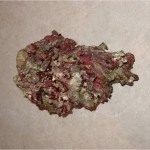
What are the benefits of live rock
When it comes to marine aquariums, you have a few choices for filtration. I prefer to use live rock for many different reasons. I have been asked many times why I prefer live rock over other types of filtration, so I thought I would take some time list the pros and cons of using live rock to help other decide if they would like to us live rock in their aquarium.
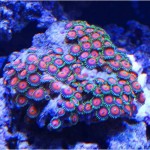
Good Corals for Beginners: Zoanthid and Palythoa
Zoanthid and Palythoa are both colonial type corals, meaning they form a colony of individual polyps all living together. They are commonly referred to as zoas and palys. As they are very similar corals, I have combined them into one article. Zoas and Palys are both very hardy soft coral placing them amount the easier to keep corals and making them a excellent choice as corals for beginners. These corals can come in some spectacular colors and color combinations, among the most amazing colors to be found in any soft coral. For these reasons, they are kept by advanced and new hobbyist alike. I have also added star polyp corals and glove polyp corals into this article as they are also colonial corals with very similar requirements and hardiness when compared to zoas and palys. The below will outline the requirements to keep these corals healthy and thriving in your tank.
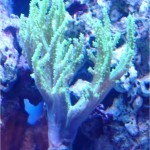
Good Corals For Beginners – Leather Corals
Leather corals are another very hardly coral making them a very good choice for people that are new to the hobby. They are readily available throughout the hobby and they can also grow to become a great looking addition to any set-up if kept in the correct conditions. These corals are very popular with both new hobbyist starting with corals for the first time, and advanced hobbyist as well making them among the most popular corals in the hobby today.
Generally speaking, leather corals are a soft skinned coral with visible polyps all over their skin. The do not have a calcified skeleton structure making them a little more tolerant of some water parameters like calcium. There are hundreds of different species of leather corals. Properly identify the exact species can sometime be very difficult as their shape can altered due to environmental factors such as temperature, salinity, light intensity and water movement to name a few. A leather can look one way in a aquarium and then (over time) look very different when placed in another tank.
Continue reading
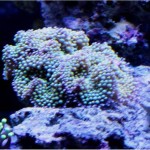
Good Corals for Beginners: Mushroom Corals
Mushroom corals like an aquarium superman rhodactis mushroom are a great choice for a beginner coral. They are a soft coral and among the hardiest of corals commonly found in the hobby today which can tolerate less than idea water conditions for short periods of time. Mushrooms can also be found in a wide verity of colors and sizes making then a very great choice to add some color to any reef aquarium. They are also readily available in most local fish stores and on-line reef stores.
There will be a few more articles posted on other easier/simpler corals to care for, so stay tune, more to come.
The below will outline the requirements to keep mushroom corals healthy and thriving in your tank.
Continue reading